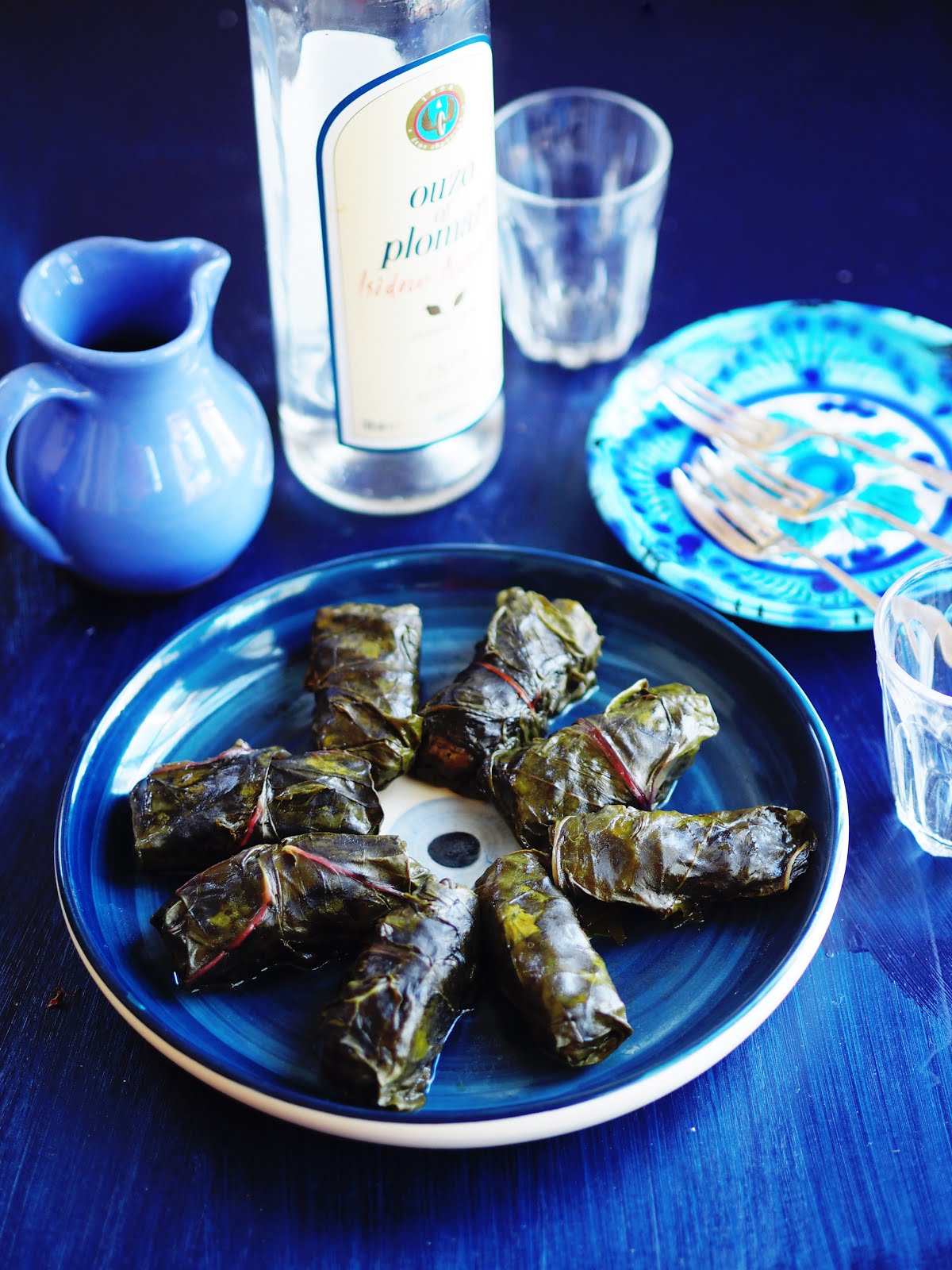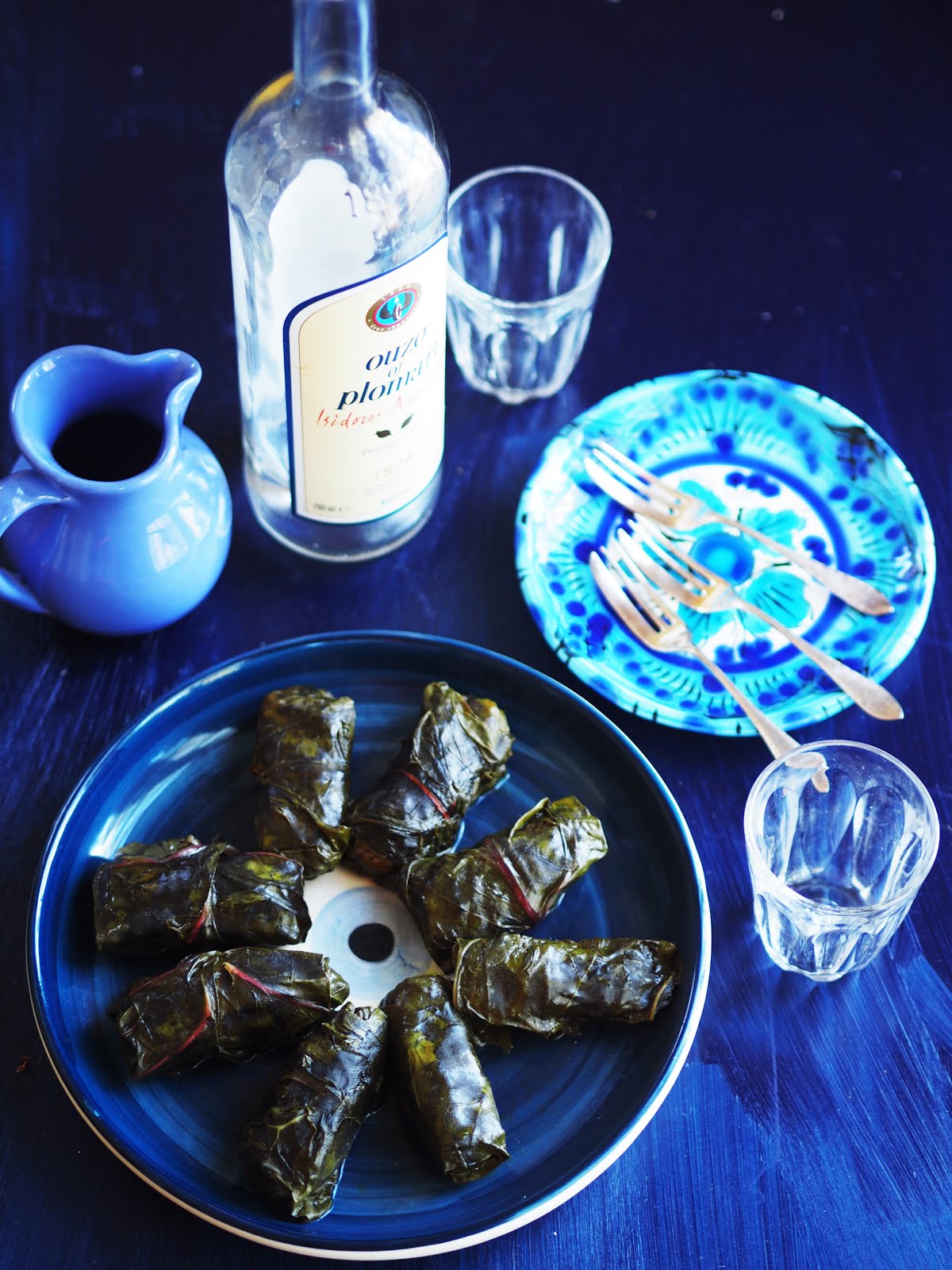
Surprisingly, 'swiss chard' isn't native to Switzerland. It’s homeland is the Mediterranean and it has been a revered vegetable (particularly for its medicinal qualities) since Ancient times. The Greek philosopher, Aristotle wrote about chard in the fourth century B.C. Today, swiss chard continues to be a much loved vegetable on the Ionian island of Zakynthos, where it is known in the local dialect as ‘seskala’. In the rest of Greece it is referred to as seskolo. The Zantiots prize the flavour of seskala, which is similar to spinach, but with a stronger, more assertive (some think, bitter or earthy) flavour.
The fantastic variety of phytonutrients in seskala is
quickly recognizable in its vibrant colours, from the rich dark green leaves to
the rainbow of reds, purples and yellows. Sekala is rich in vitamin K, A, C as
well as iron, magnesium, potassium, and manganese. It also has lutein, shown to
help with eye health.


Although seskala is available throughout the year, its peak season is in the summer months. In Australia sekala is at its peak from December to February, when it is at its best and in the greatest abundance.
For those who are not familiar with wrapping and rolling leaves for
dolmades, the leaves of the seskala are by far the easiest to use. Big and rich, they
do not need much as much time and effort as that which is required for spring time vine leaves.
This recipe is a twist on classic dolmades. I have swapped
the more traditional ‘carolina’ white rice for brown basmati rice and added a little
extra protein with the addition of quinoa. Instead of the more traditional
lemon, I also like to use verjuice, known as ‘aggourida’ in Greek
– particularly as lemon season is coming to an end here in Australia, as we
head into the summer months.


Dolmades with swiss
chard, aggourida and quinoa
(ντολμάδες με σέσκουλο, αγουρίδα και κινόα)
Makes about 40 dolmades,
preparation time 30 mins, cooking time 45 mins
Ingredients
About 1kg of seskala
1/4 cup aggourida or verjuice
1/2 cup olive oil (more if needed)
water, as needed (1 or more cups)
Stuffing ingredients
400g ground pork and veal*
½ cup brown basmati rice
½ cup of white quinoa
2tsp of ‘sparoza’ Mediterranean herb and spice mix
1 & 1/2 tsp salt, as needed
1/2 tsp black pepper
Method
Wash the chard and cut the stems. If you have any large
leaves, cut them in two. Layer the leaves in a neat pile and place any torn or
damaged leaves in the bottom of the pot you will use to cook the dolmades. (The pot that you use will need
to hold the rolled leaves snuggly).
Blanch the leaves in a separate
pot of boiling salted water for 1 minute, remove and set aside to drain well in
a colander.
Place all the stuffing
ingredients in a bowl and use your hands to knead the mixture to combine the
flavours well.
Place a 6-8 seskala leaves before you on a work surface and
start
stuffing the leaves, by placing one spoon of the stuffing mixture in the middle
of each leaf. Roll and fold in the sides of each leaf gently. Place each
stuffed leaf on top of the leaves in the bottom of the pot – build them up into
layers as you go.
Place a small dessert plate
on the pot to hold the stuffed leaves in place; mix the olive oil, aggourida and water and pour over the
pot and bring to a gentle simmer. Cover the pot and let it simmer for 45
minutes or so. Uncover and check to make sure the stuffing is fully cooked.
Cool and serve warm.
*during fasting times, you can substitute the meat with more rice and quinoa to make a meat free version.

No comments
Post a Comment
Thank you for your comments, I really appreciate every single one!